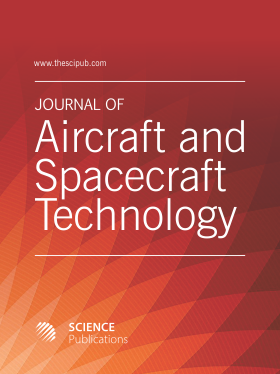Fishing for “16 Psyche”
- 1 Bucharest Polytechnic University, Romania
Abstract
16 Psyche is one of the most massive asteroids in the asteroid belt. This object has a diameter of over 200 km and contains about 1% of the mass of the entire asteroid belt. It is believed to be the exposed iron core of a protoplanet and is the most massive metallic M-type asteroid. It was discovered by the Italian astronomer Annibale de Gasparis on March 17, 1852, in Naples and named after the Greek mythological figure Psyche. The prefix "16" means that it was the sixteenth minor planet in the order of discovery. 16 Psyche is the most massive metallic asteroid of type M. Radar observations indicate a fair pure iron-nickel composition. For a long time, scientists have imagined the possibility of fishing for metals from asteroids, or meteorites, close to our planet. Today, those predictions may come true. NASA is going to build a robot, called "Psyche", which will have the mission to explore an asteroid in the main asteroid belt between Mars and Jupiter. The asteroid "16 Psyche" has a diameter of 226 kilometers and is made of metals such as iron, nickel and gold. The metals that make up this unique asteroid could be worth more than $ 10 trillion. Radar observations indicate that Psyche has a dense and mostly metallic composition, consistent with one of the highest radar albedos in the asteroid belt (0.37±0.09). The psyche appears to have a surface that is 90% metallic and 10% silicate rock, with 6±1% orthopyroxene. Scientists believe that these metals can be mostly iron and nickel. NASA's infrared telescope installation at Mauna Kea Observatories reported evidence (~ 3 μm absorption characteristics) of hydroxyl ions on the asteroid in October 2016 that could suggest water ice. Because the psyche is believed to have formed in dry conditions without the presence of water, hydroxyl could have reached the psyche through previous impacts of low-carbon asteroids. The psyche appears to be an exposed metal core or a fragment of a metal core in a larger differentiated parent body, about 500 kilometers in diameter. If the Psyche is really one, there could be other asteroids in similar orbits. However, Psyche is not part of any identified asteroid family. One hypothesis is that the collision that formed the Psyche occurred very early in the history of the Solar System and all other remains were transformed into fragments by subsequent collisions or had their orbits beyond recognition. However, this scenario is considered to have a probability of only 1%. An alternative is that the psyche has been broken by impacts, but not catastrophically. In this case, it may be a candidate for the parent body of mesoseiderites (a class of meteorites with stony stones). Another possibility is that the Psyche is the end of the various relic bodies left by the formation of the inner planet. The asteroid's mantle may have been stripped not of a single collision, but of multiple (> 3) relatively slow side collisions with bodies of comparable or larger size. What is left is a metal core covered by a thin layer of silicates, which is revealed spectrally. In such a case, the Psyche would be analogous to Mercury, but much less massive.
DOI: https://doi.org/10.3844/jastsp.2020.136.151

- 4,120 Views
- 1,752 Downloads
- 24 Citations
Download
Keywords
- NASA
- 16 Psyche
- Asteroid
- Resources
